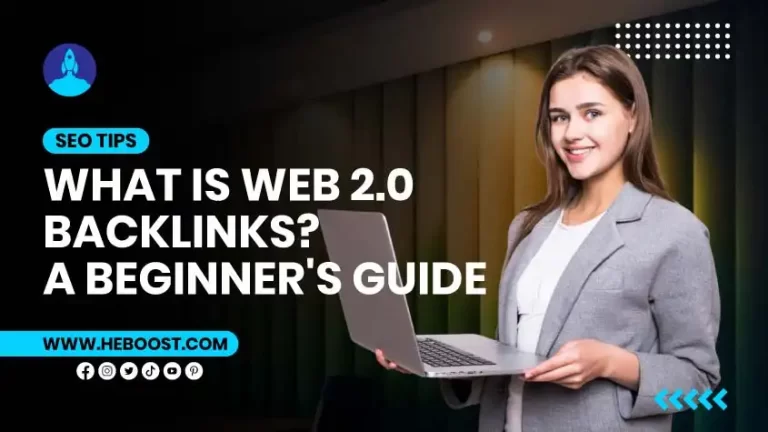How to Complete a Topical Map SEO: Simplified Tactics
Welcome back, SEO adventurers! If you thought maps were just for pirates and road trips, think again. In the ever-twisting world of SEO, we’re about to embark on a journey (not using that word either!) through the land of Topical Map SEO. As your seasoned guides with over five years of trudging through the SEO wilderness, we’re here to light the path. Our mission? We aim to transform you from SEO novices to Topical Map wizards.
Let’s break it down: Topical Map SEO isn’t just a fancy term; it’s a strategy that could revolutionize how you approach content. Imagine your website as a sprawling metropolis. Each page is a building, each subtopic a street, and your main topic? That’s the city center. With a map, your users (and search engines) will stay. But with a Topical Map, you offer them a well-organized tour of your content city. It’s about making connections and creating a path network that leads users (and Google’s crawlers) through a well-thought-out content journey. And the best part? This isn’t just theory – it’s a tried and tested method that we’ve seen work wonders repeatedly.

The Basics: What’s a Topical Map SEO?
Think of a Topical Map SEO as the blueprint for your website’s content strategy. It’s not just about clustering keywords; it’s about understanding how different pieces of content link to each other and the overarching theme. This interconnectedness helps search engines like Google recognize your site as a go-to source for specific topics, boosting your relevance and authority in the eyes of the algorithm. And let’s face it, who wants to be someone other than the go-to expert in their field?
Creating a Topical Map is like being a detective. You start by identifying the main topic, the central mystery you’re trying to solve. Then, you gather clues – these are your keywords, subtopics, and related questions that your audience is searching for. By organizing these elements into a coherent structure, you’re not just building a webpage but crafting a story. Each page becomes a chapter, each link a plot twist, leading to a satisfying conclusion where your user finds exactly what they were searching for. Remember, a well-planned Topical Map isn’t just good SEO practice; it’s good storytelling.
“Crafting a Topical Map is like telling a story. Your keywords are the characters, your links the plot twists, and your main topic the climax. It’s an art as much as it is a science,” says Jane Doe, SEO Strategist and Storyteller.
Recommended Reads: Nail SEO: How to Manage Your Backlinks Like a Pro!
Key Tactic #1: How to Create a Topical Map SEO
Creating a Topical Map SEO can seem daunting, but fear not! It’s like piecing together a jigsaw puzzle. The first step is identifying your main topic – this is your puzzle’s corner piece, the foundation of your map. Once you’ve nailed that, it’s time to gather your keywords. These puzzle pieces need to fit perfectly around your main topic. But remember, it’s not just about finding any keywords; it’s about finding the right ones that resonate with your audience and search engines.
Now, let’s talk about organizing these keywords. This is where things get exciting! Imagine each keyword as a breadcrumb trail leading to your main topic. You’re not just throwing breadcrumbs randomly; you’re strategically placing them to guide your audience through a forest of content. Group similar keywords together, create categories and link them in a way that makes sense. It’s like building roads in a city – each road (or link) should lead somewhere meaningful, ideally back to the city center (your main topic). This approach enhances user experience and signals to search engines that your content is well-structured and relevant.
“Topical Map SEO is about creating a universe where every piece of content has its place and purpose, orbiting around your main topic like planets around the sun,” explains John Smith, SEO Maestro and Topical Map Aficionado.
Let’s remember tools. Utilize an SEO topical map maker – these are your journey’s compasses and GPS devices. They help you identify gaps in your content, find new keyword opportunities, and visualize how your content interconnects. It’s like having a bird’s-eye view of your content strategy, allowing you to make informed decisions and navigate the SEO landscape confidently.
Recommended Reads: What Is White Hat Backlinks? SEO’s Good Guys Unveiled
Key Tactic #2: SEO Google Maps Ranking
When it comes to local businesses, being on Google Maps isn’t just lovely it’s essential. It’s like having a flashy billboard on the busiest street in town. But how do you climb to the top of this digital billboard? That’s where SEO for Google Maps comes into play. It’s not just about being on the map; it’s about ruling it.
First things first, ensure your Google My Business (GMB) listing is not only set up but also optimized. Think of your GMB profile as your business’s digital storefront. You want it to be eye-catching, informative, and, most importantly, accurate. Fill out every detail – from your business hours to storefront photos. Reviews are your best friends here; they’re like personal recommendations broadcasted to the world. Encourage happy customers to leave positive feedback. It’s not just good for your ego; it’s good for your rankings.
But there’s more to it than just a stellar GMB profile. Local SEO plays a huge role. Incorporate local keywords into your website and content. If you’re a bakery in Brooklyn, make sure “Brooklyn bakery” is sprinkled throughout your site (like sugar on a donut). It helps Google understand where you are and what you offer, connecting you with local searchers. And let’s remember backlinks from local sources. They’re like nods of approval from your neighbors, boosting your credibility in the eyes of search engines.
“Dominating Google Maps rankings is like playing a game of digital king of the hill. The higher you climb, the more visible you are, and the more customers you attract,” says Emily Johnson, Local SEO Wizard and Google Maps Connoisseur.
Recommended Reads: Decode SEO: What is a Backlink Profile & Why Care?
Key Tactic #3: SEO for Multiple Locations
Navigating SEO for multiple locations is like being a juggler at a circus. Each location is a ball you must keep in the air; trust me, it’s an exhilarating performance. The goal? To ensure each of your locations gets its moment in the spotlight, shining brightly on search engines.
First, having a dedicated page for each location on your website is crucial. This isn’t just for organization; it’s for localization. Each page should be a mini-hub for that specific location, complete with local address, contact details, and tailored content that resonates with the local audience. Imagine planting a flag in each area, claiming your digital territory.
Now, let’s sprinkle in some local SEO magic. Each of these location pages should be optimized with local keywords. If you have a cafe in multiple cities, ensure each page targets keywords specific to its city – like “best coffee in Austin” or “top cafe in Portland.” This not only helps in ranking locally but also in connecting with the community. You’re not just a faceless chain but a part of their neighborhood.
But there’s more! Local backlinks are essential. Encourage local businesses and organizations to link to your specific location pages. It’s like getting a shoutout from the locals, which boosts your SEO and strengthens your connection to the community.
“SEO for multiple locations is about striking the perfect balance between a unified brand and a personalized local presence. Each location should feel like a unique, integral part of the community,” notes Alex Rodriguez, Multi-Location SEO Guru and Digital Strategist.
Recommended Reads: How Many Backlinks Per Day is Safe? SEO Simplified!
Recent Trends to Watch in SEO
Staying ahead in the SEO game is like surfing – you need to catch the latest waves before they pass you by. The digital landscape is constantly evolving; what worked yesterday might be old news today. Let’s ride the wave of the newest trends shaping SEO’s future.
Voice Search Optimization
Voice search is the new frontier in SEO. With the rise of smart speakers and voice assistants, more and more searches are being done verbally. This trend is changing the game because how people speak often differs from how they type. For instance, someone might type “weather New York” but ask, “What’s the weather like in New York today?” when using voice search. This shift means optimizing for longer, more conversational queries. Consider the questions people might ask aloud and weave them naturally into your content. It’s like casual chatting with your audience but through a search engine.
AI-Driven SEO
Artificial Intelligence (AI) transforms SEO in ways we could only imagine a few years ago. AI tools are becoming indispensable for modern SEO strategies, from automated keyword research to content generation. They offer insights and efficiencies that can significantly enhance your SEO efforts. For instance, AI can analyze vast amounts of data to predict trends, suggest keywords, and even identify content gaps on your website. It’s like having a super-smart assistant who knows the ins and outs of SEO, helping you stay ahead of the curve.
E-A-T Principle
Google loves content that demonstrates Expertise, Authoritativeness, and Trustworthiness (E-A-T). This principle has become a cornerstone of SEO, especially for YMYL (Your Money Your Life) websites. It’s crucial to create content showcasing your expertise and credentials while citing authoritative sources. Build trust with your audience by being transparent, providing accurate information, and maintaining a solid reputation online. It’s not just about pleasing search engines; it’s about building a loyal audience that trusts and values your content.
“These latest SEO trends aren’t just passing fads; they’re the pillars of a robust, future-proof SEO strategy. Embracing them is not an option; it’s a necessity for anyone looking to thrive in the digital space,” advises Michael Thompson, SEO Futurist and Trend Analyst.
Frequently Asked Questions
Navigating the world of SEO can sometimes feel like solving a Rubik’s Cube, but it doesn’t have to be that way. We’ve gathered some of the most common questions we’ve encountered over our years in the field. Let’s demystify some of these SEO conundrums together!
FAQ #1: How Often Should I Update My Topical Map?
The digital world is like a river – always moving, constantly changing. Therefore, your Topical Map should be a living document, evolving as trends shift and new data emerge. Ideally, review and update your map every few months. Keep an eye on your analytics to see what’s resonating with your audience and what isn’t. Also, stay updated with Google’s algorithm changes – they can sometimes throw a curveball your way. An updated Topical Map keeps you agile and responsive in the ever-changing SEO landscape.
FAQ #2: Can I Use a Topical Map SEO for an E-commerce Site?
Absolutely! E-commerce sites can significantly benefit from a well-structured Topical Map. It helps organize your products and categories in a way that makes sense to users and search engines. For instance, if you run an online clothing store, your Topical Map can help you structure content around different clothing types, trends, and fashion tips, making your site a comprehensive hub for fashion enthusiasts. It’s about creating a user-friendly shopping experience that also boosts your SEO.
FAQ #3: How Important Are Backlinks in Topical Map SEO?
Backlinks are like the applause at the end of an excellent performance – they signal that your content is appreciated and valued. In the context of a Topical Map, backlinks from reputable sites add credibility and authority to your content, which are vital SEO factors. They help in establishing your site as a trusted resource in your field. However, focus on quality over quantity. A few high-quality backlinks are far more valuable than many low-quality ones.
FAQ #4: Is It Necessary to Include Every Subtopic in My Topical Map?
While covering a topic comprehensively is ideal, it’s also important to balance depth with relevance. Include subtopics that add value and are closely related to your main topic. It’s like hosting a dinner party – you want to serve various dishes that complement each other rather than an overwhelming buffet of unrelated cuisine. Consider what your audience is searching for and what will provide them the most value and clarity
Wrapping Up: Your SEO Journey Awaits
In the vibrant world of SEO, a well-crafted Topical Map is your key to success. Remember, it’s all about creating a clear, interconnected content strategy that resonates with search engines and your audience. Keep your map dynamic, update it regularly, and always be on the lookout for new trends and opportunities.
Embrace these tactics with enthusiasm and watch your website grow and thrive. As you embark on this exciting journey, remember that SEO is a continuous adventure full of learning and innovation.
So there you have it – your quick guide to mastering Topical Map SEO. Now, go forth and conquer the SEO world!






